|
Yearbook
photos being shot today, this week
The WolfTracks Yearbook will be holding its annual Yearbook Picture
Week this week. All faculty and staff are greatly encouraged to
have headshots made. These headshots frequently provide identifying
images for faculty and staff items in Inside ASU and are sent to the
news media when required. Faculty and staff must bring a
valid ASU ID to the 1st floor of the Student Union. The dates
and times are: Monday, Sept. 13, 10 a.m.-2 p.m.; Tuesday,
Sept. 14, -9 a.m.-2 p.m.; Wednesday, Sept. 15, 10 a.m.-6 p.m.;
Thursday, Sept. 16, 10 a.m.-6 p.m.; Friday, Sept. 17, 9
a.m.-2 p.m. For more information, contact
Natalie Eskew, ext. 2055.
Dr. Reeve and Dr. Allen are awarded patent
Dr.
Scott Reeve,
Chemistry, and Dr. Susan Allen, Arkansas Center for Laser Applications and Science,
were awarded a patent on August 3 for a Multicolor Cavity Ringdown Based Detection Method and Apparatus (U.S. Patent # 7,768,647
B2). Dr. Reeve and Dr. Allen, along with
colleagues Dr. J. Bruce Johnson, Physics, and Dr. William Burns,
Chemistry also coauthored a proceedings paper, "Optical
Detection of Special Nuclear Materials: an alternative approach for
standoff and remote sensing," which was presented at the Chemical,
Biological, Radiological, Nuclear and Explosives (CBRNE) Sensing
XI conference held in conjunction with the
SPIE Defense, Security, and
Sensing 2010 meeting in Orlando, Fla., in April. Dr. Reeve,
along with postdoctoral research associate Dr. Trocia Clasp and
Dr. William Burns, coauthored a second proceedings paper,
"Measurement of ammonia skin gas using a mid-infrared Pb-salt
tunable diode laser," which was also presented at this same meeting.
Dr. Tusalem publishes article in
international journal
Dr. Rollin Tusalem,
Political Science, recently published an article in the
June 2010 issue of
the journal
International Political Science Review (31(3):346-365), the leading journal of the
International Political Science Association. Dr. Tusalem's article,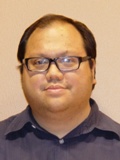 "Determinants of Coup d’État Events 1970-90: The Role of Property
Rights Protection." The article explores the factors that contributed to the success of
coups d'état launched by the military during
a period when developing states encountered problems with state
legitimacy. The findings suggest that nation-states which protected
property rights and elite class “interests” were at a lower risk of
experiencing a coup d'état event. Dr.
Tusalem's study implies that states, during the period examined,
were at a higher risk of reactionary coups if state threats against
property rights were
pervasive. Furthermore, as modernization reached a peak in the early
1970s, the masses of the third world became empowered through the
populist programs that incumbent regimes began to implement. Such
programs, that often involved property re-distribution or land
reform programs, went against the entrenched interests of the
elites. Together with an international environment where cold war
politics was at play, the military establishment concomitantly
developed an alliance with the land-owning and investment classes to
secure their hierarchical dominance in a very stratified social
system. Top generals and ranked soldiers also received western
educations and were exposed to the doctrines of western capitalism.
Thus, elite segments in Latin America, Africa, and Asia began
to lose the ability to control the excesses that wayward populist
regimes wrought, and they frequently courted the military to
intervene in the polity to maintain their oligarchic hold on
politics and society. This approach saw the entrenchment of the
alliance between the military and the landowning and investment
classes which was clearly evident in the long repressive military
regimes of many developing states. "Determinants of Coup d’État Events 1970-90: The Role of Property
Rights Protection." The article explores the factors that contributed to the success of
coups d'état launched by the military during
a period when developing states encountered problems with state
legitimacy. The findings suggest that nation-states which protected
property rights and elite class “interests” were at a lower risk of
experiencing a coup d'état event. Dr.
Tusalem's study implies that states, during the period examined,
were at a higher risk of reactionary coups if state threats against
property rights were
pervasive. Furthermore, as modernization reached a peak in the early
1970s, the masses of the third world became empowered through the
populist programs that incumbent regimes began to implement. Such
programs, that often involved property re-distribution or land
reform programs, went against the entrenched interests of the
elites. Together with an international environment where cold war
politics was at play, the military establishment concomitantly
developed an alliance with the land-owning and investment classes to
secure their hierarchical dominance in a very stratified social
system. Top generals and ranked soldiers also received western
educations and were exposed to the doctrines of western capitalism.
Thus, elite segments in Latin America, Africa, and Asia began
to lose the ability to control the excesses that wayward populist
regimes wrought, and they frequently courted the military to
intervene in the polity to maintain their oligarchic hold on
politics and society. This approach saw the entrenchment of the
alliance between the military and the landowning and investment
classes which was clearly evident in the long repressive military
regimes of many developing states.
Dr.
Coleman publishes article in journal
Dr. Amanda Coleman,
Geography, recently published an article,
“Rehabilitating the Region: The New Deal, Gender and the Remaking of
the Rural South,” in the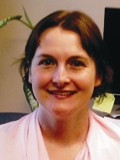 summer 2010 issue of the
Southeastern Geographer. The paper concerns the rural resettlement
communities (such as the Dyess Colony, now the town of Dyess,
Arkansas) that were constructed by the federal government throughout
the South during the 1930s. Dr. Coleman's paper specifically examines the
participation of women in these farming communities. She found that
the role of rural farmwomen within the family changed drastically
when families moved into the communities. The farming communities
were structured so that women were largely isolated inside the home;
previously many women had worked in the fields, but within these
farm communities, women were intended to act as stereotypical
“housewives.” Dr. Coleman's study contends that women were often ambivalent
about this changed status, and also argues that participation in the
farming communities altered social relations within families in ways
that placed women at an economical disadvantage.The paper fits
within Dr. Coleman's larger research
agenda, which focuses in part on the changing role of women in
agriculture in the south as the region transitioned from a
tenancy-based agricultural economy to an agribusiness-based agricultural economy after
World War II. summer 2010 issue of the
Southeastern Geographer. The paper concerns the rural resettlement
communities (such as the Dyess Colony, now the town of Dyess,
Arkansas) that were constructed by the federal government throughout
the South during the 1930s. Dr. Coleman's paper specifically examines the
participation of women in these farming communities. She found that
the role of rural farmwomen within the family changed drastically
when families moved into the communities. The farming communities
were structured so that women were largely isolated inside the home;
previously many women had worked in the fields, but within these
farm communities, women were intended to act as stereotypical
“housewives.” Dr. Coleman's study contends that women were often ambivalent
about this changed status, and also argues that participation in the
farming communities altered social relations within families in ways
that placed women at an economical disadvantage.The paper fits
within Dr. Coleman's larger research
agenda, which focuses in part on the changing role of women in
agriculture in the south as the region transitioned from a
tenancy-based agricultural economy to an agribusiness-based agricultural economy after
World War II.
Emmy winner Pansy Hall part of
R-TV series Sept. 15-16
Pansy Hall, a 1985 graduate of Arkansas State University and an Emmy
award-winning news producer, is the first of four distinguished alumni
to return to campus as part of the ASU R-TV Alumni
Professional-in-Residence Series. She will be on
campus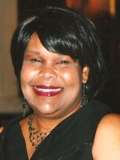 Wednesday-Thursday, Sept. 15-16.
The series, started by the Department of Radio-Television in the spring
of 2010, invites R-TV graduates who have excelled in their field to
share their experiences with students and interact with faculty over a
two-day period. Hall is a news producer who currently works at the ABC/CW
affiliate in Memphis, Tenn. She graduated from ASU with a
bachelor of science in Radio-Television and a minor in Computer
Information Systems.
Hall won a regional Emmy in 2009 in Best Light Feature category for a
story with FOX13 reporter Tom Dees and photojournalist Derric Curran.
She began her television career at KAIT in Jonesboro in 1985.
For details, contact
Dr. Mary Jackson-Pitts,
interim chair, Department
of Radio/Television at ext. 3070, or see the
NewsPage release.
Wednesday-Thursday, Sept. 15-16.
The series, started by the Department of Radio-Television in the spring
of 2010, invites R-TV graduates who have excelled in their field to
share their experiences with students and interact with faculty over a
two-day period. Hall is a news producer who currently works at the ABC/CW
affiliate in Memphis, Tenn. She graduated from ASU with a
bachelor of science in Radio-Television and a minor in Computer
Information Systems.
Hall won a regional Emmy in 2009 in Best Light Feature category for a
story with FOX13 reporter Tom Dees and photojournalist Derric Curran.
She began her television career at KAIT in Jonesboro in 1985.
For details, contact
Dr. Mary Jackson-Pitts,
interim chair, Department
of Radio/Television at ext. 3070, or see the
NewsPage release.
MacDonald to speak on
Nabataean uses of water Sept. 16
Julie K. MacDonald, ASU Museum, will present a lecture,
"Ritual Use of Water by the Nabataeans at Petra," at this month's
meeting of the Central Mississippi Valley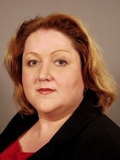 Archeological Society on
Thursday, Sept. 16, 7 p.m., in the ASU Museum, Room 182.
Archaeologists, hydrologists, and
tourists marvel at the ingenuity of Nabataean construction of large
cisterns, complex irrigation systems, and miles of water channels to
supply water to their desert settlements. ASU Museum curator Julie
K. MacDonald has researched the role of water in Nabataean ritual,
including cultic and funerary rites conducted in Petra and
surrounding lands. MacDonald will take her audience on a journey to
the cradle of human civilization as she describes her multiple
seasons of fieldwork in Jordan as she worked toward her master’s
degree from Brigham Young University. A Mediterranean feast from a
local culinary artist will be provided. Arkansas Archeological
Survey publications and CMVAS T-shirts will be offered for sale, and
information will be available on upcoming archeological meetings and
local fieldwork opportunities. For details, contact
Dr. Julie Morrow, Arkansas
Archeological Survey's ASU station archeologist, at ext. 2071. Archeological Society on
Thursday, Sept. 16, 7 p.m., in the ASU Museum, Room 182.
Archaeologists, hydrologists, and
tourists marvel at the ingenuity of Nabataean construction of large
cisterns, complex irrigation systems, and miles of water channels to
supply water to their desert settlements. ASU Museum curator Julie
K. MacDonald has researched the role of water in Nabataean ritual,
including cultic and funerary rites conducted in Petra and
surrounding lands. MacDonald will take her audience on a journey to
the cradle of human civilization as she describes her multiple
seasons of fieldwork in Jordan as she worked toward her master’s
degree from Brigham Young University. A Mediterranean feast from a
local culinary artist will be provided. Arkansas Archeological
Survey publications and CMVAS T-shirts will be offered for sale, and
information will be available on upcoming archeological meetings and
local fieldwork opportunities. For details, contact
Dr. Julie Morrow, Arkansas
Archeological Survey's ASU station archeologist, at ext. 2071.
ITTC launches new concept;
provides new resources
The Interactive Teaching and
Technology Center (ITTC) announces several resources now
available to ASU faculty and staff. These new offerings will
facilitate designing and developing quality
courses. These resources include the Course Development Life Cycle,
the ITTC Institute, ITTC Quality Teaching and Learning at
ASU, and ITTC Learning Centers. ITTC has created a
process framework, the "Course Development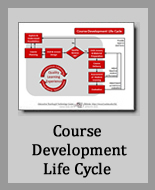 Life Cycle" (CDLC), that can be used to help instructors focus on different
components of providing a quality learning experience for students. To fine-tune the CDLC, the ITTC used it as the foundation in
teaching the 2010 ITTC Summer Institute, which was attended by 56
faculty members this year. Beginning Tuesday, Sept. 14, and Friday,
Sept. 17, faculty members will be able to participate year-round in
the highly sought-after ITTC Institute. The Institute will be
taught this fall on Tuesday afternoons and Friday mornings. Much of
the material covered in the Institute is also available online in
the Blackboard course “ITTC Quality Teaching and Learning at
ASU.” ITTC Learning Centers provide another component. ITTC Learning Centers, available as
online courses and as training seminars, are a set of
activity-based modules designed to provide faculty with essentials
skills to develop quality courses. They are designed to be short in
duration (1-2 hours) and present materials in an interesting and
engaging way. They provide a hands-on overview of the subject and
also include resources that can be used to gain a deeper
understanding and serve as reference materials. Currently there are eight Learning Centers
that include topics such as Course Planning and Design Toolkit,
Blackboard Boot Camp, and Creating Online Tests Using Respondus. Additional Learning Centers will be included as they become
available. To register for the ITTC Institute or the Learning
Centers seminars, visit the ITTC homepage and
scroll down to ITTC Apps, and click
Scheduler.
All current ASUJ faculty should already have access to these two online courses by
logging into Blackboard. For details, e-mail the
ITTC directly, call ext. 2334
or visit ITTC in the Dean B. Ellis Library, Suite
301.
Life Cycle" (CDLC), that can be used to help instructors focus on different
components of providing a quality learning experience for students. To fine-tune the CDLC, the ITTC used it as the foundation in
teaching the 2010 ITTC Summer Institute, which was attended by 56
faculty members this year. Beginning Tuesday, Sept. 14, and Friday,
Sept. 17, faculty members will be able to participate year-round in
the highly sought-after ITTC Institute. The Institute will be
taught this fall on Tuesday afternoons and Friday mornings. Much of
the material covered in the Institute is also available online in
the Blackboard course “ITTC Quality Teaching and Learning at
ASU.” ITTC Learning Centers provide another component. ITTC Learning Centers, available as
online courses and as training seminars, are a set of
activity-based modules designed to provide faculty with essentials
skills to develop quality courses. They are designed to be short in
duration (1-2 hours) and present materials in an interesting and
engaging way. They provide a hands-on overview of the subject and
also include resources that can be used to gain a deeper
understanding and serve as reference materials. Currently there are eight Learning Centers
that include topics such as Course Planning and Design Toolkit,
Blackboard Boot Camp, and Creating Online Tests Using Respondus. Additional Learning Centers will be included as they become
available. To register for the ITTC Institute or the Learning
Centers seminars, visit the ITTC homepage and
scroll down to ITTC Apps, and click
Scheduler.
All current ASUJ faculty should already have access to these two online courses by
logging into Blackboard. For details, e-mail the
ITTC directly, call ext. 2334
or visit ITTC in the Dean B. Ellis Library, Suite
301.
Kays Foundation celebrates 100
years of service Sept. 18
The Kays Foundation will hold a
celebration marking its 100 years of service to Arkansas State
University on Saturday, Sept. 18, from 2:30-4:30 p.m. The
celebration is open to the public and will take place at the
foundation offices, located at 1212 University Loop East, Jonesboro.
The Kays Foundation is a nonprofit corporation which exists to
promote the interests of Arkansas State University. Guests will
enjoy lemonade, cookies, and a live band while being given tours of
the foundation’s Pleasance Garden. At 3 p.m., Dr. Ruth Hawkins, Dr.
Michael Dougan, and Dr. Eugene Smith will offer remarks on the past,
present, and future impact of the Kays Foundation on the development
of ASU. At 3:30 p.m., recipients of Kays Foundation grants will
provide demonstrations of the advancements they have made with
funding provided by the foundation. Representatives from the College
of Nursing and Health Professions, the department of Biological
Sciences, the department of Computer Science, and the College of
Fine Arts will participate. For more information, contact Wayne
Blake or Maxine Pruitt at (870) 931-7898.E-mail the
Kays Foundation or
visit the Kays Foundation
online. Learn more about
founders V. C.
Kays and V. H. "Buddy" Kays online.
Back to the top |

